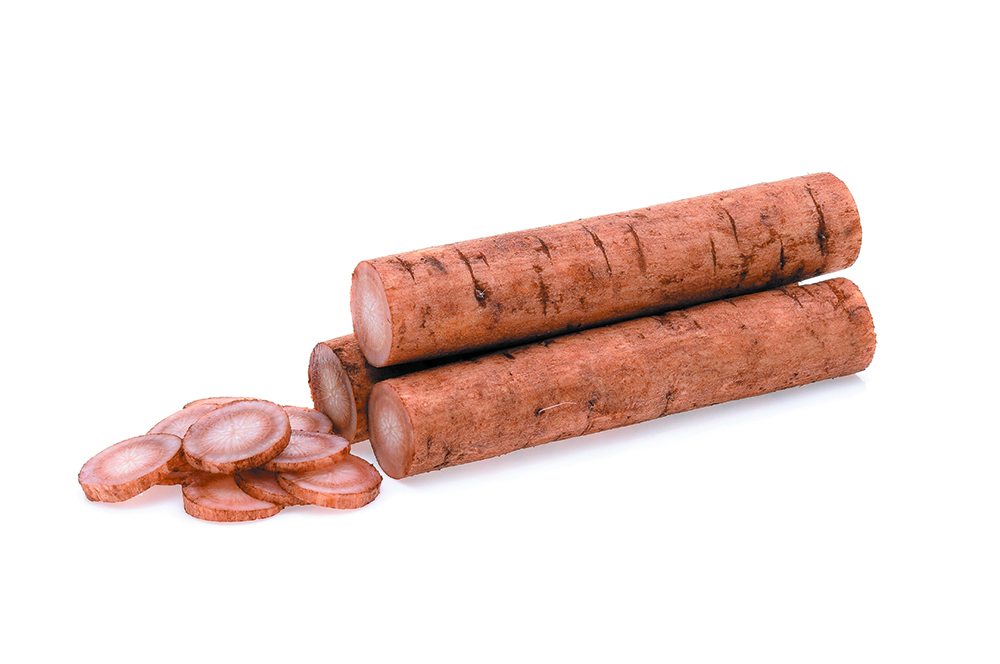GREAT IN SALADS,STIR-FRY AND AS A COFFEE SUBSTITUTE
Name: Burdock
(Arctium minus) Also known as gobo root
Burdock is a member of the sunflower family, one of the largest plant families in the world. There are at least 10 species of genus Arctium throughout Europe; Arctium minus is very common throughout North America.
Description
Burdock is a common wild plant in fields, farmlands and along trails. Someone seeing it for the first time may think they are looking at rhubarb.
Burdock is a biennial, meaning that it takes two years to produce seed. In the first year, it produces a rosette of rhubarb-shaped leaves. If you’ve never seen a rhubarb, the leaves are heart-shaped, or broadly ovate. The stem, however, is not red, as with rhubarb, but pale green.
In the second year, the plant sends up a stalk with purple to white flowers, followed by the round burrs which contain the seeds. If you closely examine a single spine on a burr, you will see that the end is hooked, reminding you of Velcro.
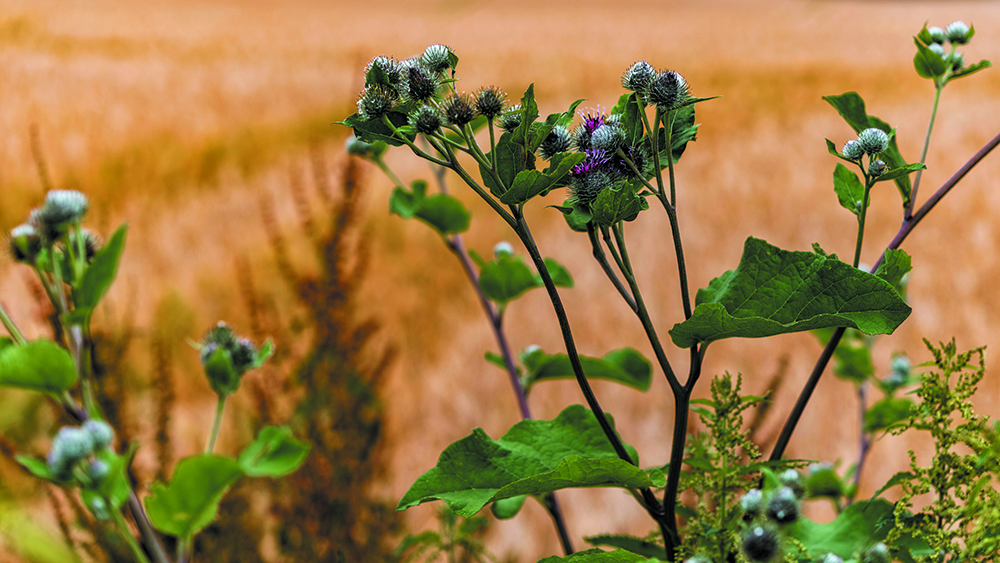
Where Found
Burdock is often found in old orchards, fields, farmlands, and disturbed soils around trails. The first burdock I ever found was in my grandfather’s abandoned fruit orchard in Ohio.
When To Harvest/Availability
Spring and summer are the best times, though the root could be collected at any time.
Uses
The roots are most commonly used for food. They can be eaten raw when roots are young and tender. They are more commonly cooked and added to stir-fries, soups and stews. The roots are sometimes dried, roasted, and ground and used as a coffee substitute, often mixed with chicory and other ingredients.
The leaves can also be cooked and eaten.
Leaves also have some medicinal and utilitarian uses.
PROCESSING: Earlier roots are more tender, although I’ve collected older roots too. They should be washed well, diced and boiled before eating. Add them to stews and soups. They add a potato-like starch to dishes, and a unique flavor. If young and tender, they are good diced and added to salads.
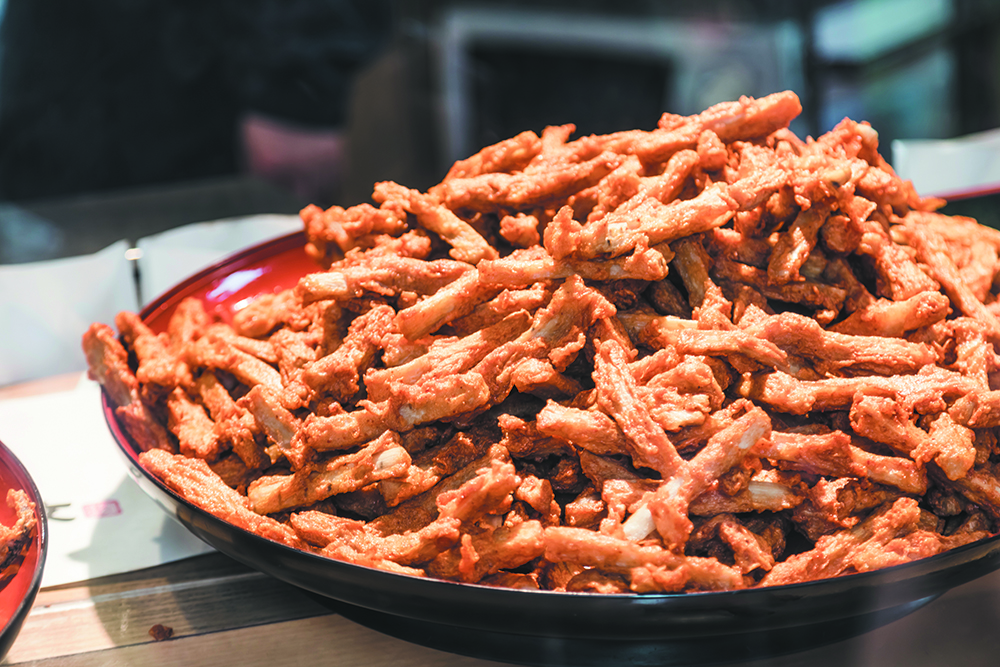
Try cooking some of the leaves for greens also. If you find them a bit strong with one boiling, change the water and give them one more boil. Season them simply with some spices, or try adding them to vegetable dishes.
To process the roots for a coffee substitute, you wash, dry, grind to a powder, roast and then percolate like regular coffee.
MEDICINE/NUTRITION: Analysis of the root (100 grams or ½ cup) shows 50 mg of calcium, 58 mg of phosphorus and 180 mg of potassium. A tea from the root is said to be useful in treating rheumatism.
Herbalists use burdock root and seeds as a soothing demulcent, tonic and alterative (restorative to normal health).
OTHER USES: Because the leaves of the first year burdock are large, they can be used to wrap fish, potatoes, or other foods that you plan to cook in a pit.
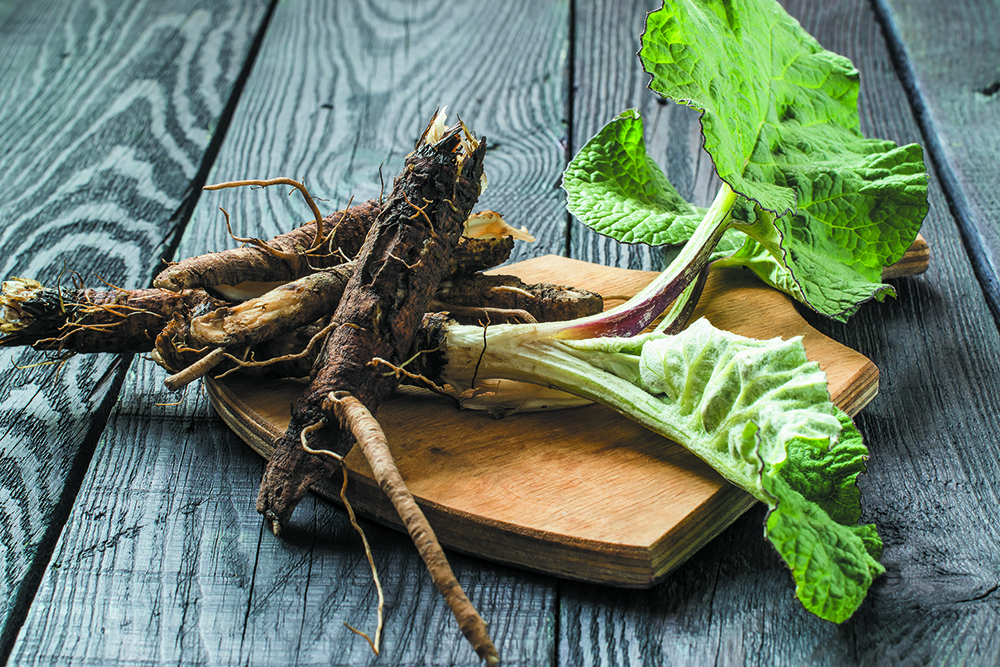
Advice For Growing
Burdock is very easy to grow from seed or from root transplant. It likes some sunlight, and soil that is not too hard and clay-like, with good drainage.
Seeds are easy to obtain from seed and garden supply stores. Look for it under the name “gobo,” since gobo is a Chinese vegetable. “Burdock” means “weed” to many, so you may not find it under that name. I also look for roots to grow at Chinese markets. If you try this, make sure there is a little green at the top of the root or it might be too old or dry to grow.
Cautions
Burdock roots must be thoroughly cleaned so you’re not eating dirt. Sometimes it’s easier to just peel the outer layer off the root.
Recipes
STIR-FRIED BURDOCK
This is a simple recipe and a good introduction to eating burdock. Clean the tender first-year roots and slice them into strips or into short slices (your preference).
Soak the roots in a mixture of quality soy sauce (I prefer Bragg’s Liquid Aminos all-purpose seasoning made from soy protein). Avoid the soy sauces that are heavily salted. Add a tablespoon of honey. Let this soak for about a half-hour.
Stir-fry and serve with rice.
PICKLED BURDOCK
The tender first-year burdock is often pickled and eaten as a vegetable. The cleaned root should be parboiled first, for about two minutes. Then make a pickling brine, and add to the jar. You can use your favorite brine recipe or try this one.
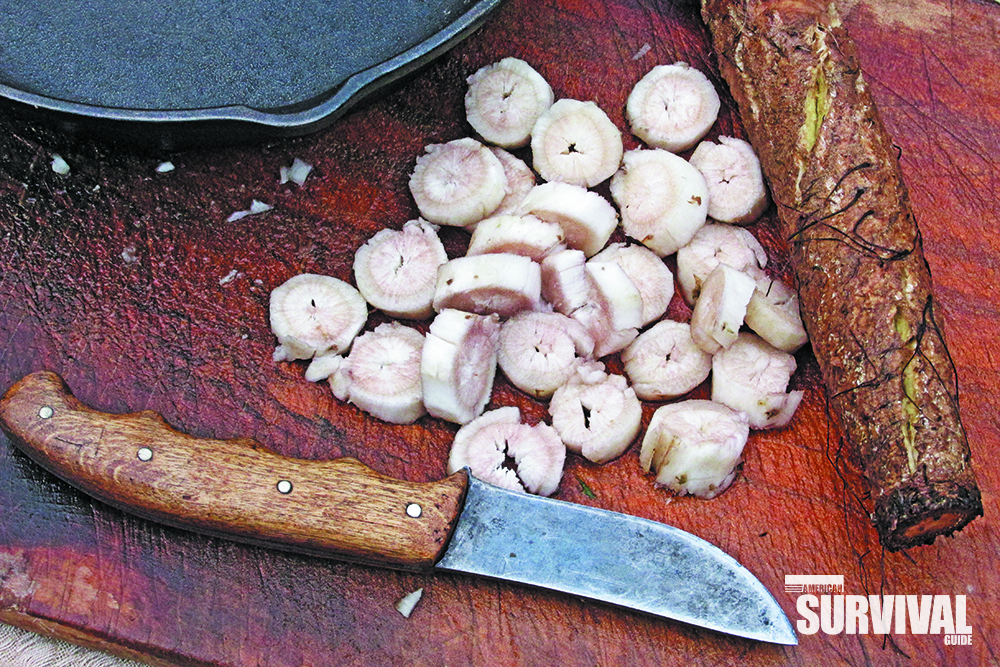
Pickling Brine
- 3 Tbsp mirin, a sweet rice wine
- 1 Tbsp wine vinegar
- 3 Tbsp komezu (rice wine vinegar)
- 2 Tbsp honey
- 1 tsp kelp powder
Store in the refrigerator for about two weeks before eating.
STIR-FRY GOBO AND CARROTS
- 3 cups (approx.) of burdock roots, sliced into 2-inch pieces
- ½ cup of sliced carrot
- 2 Tbsp oil
- 2 Tbsp honey
- ¼ tsp cayenne pepper
- ¼ cup (approx.) quality soy sauce, or Bragg’s Liquid Aminos
- Toasted sesame seeds
Cut the carrots and burdock roots, and soak in cold water for about a half hour. Then drain.
Stir-fry in a wok for 5 to 7 minutes. Add the honey and cayenne and mix well. Add the soy sauce. Add the sesame seeds as a topping when you’re about to serve.
About ASG’s Plant Advisor
Christopher Nyerges has been teaching ethnobotany since 1974. He is the author of “Guide to Wild Foods and Useful Plants” and other books on the uses of wild plants. Nyerges has contributed many articles to American Survival Guide on a wide range of topics. He can be reached at SchoolofSelf-Reliance.com.


